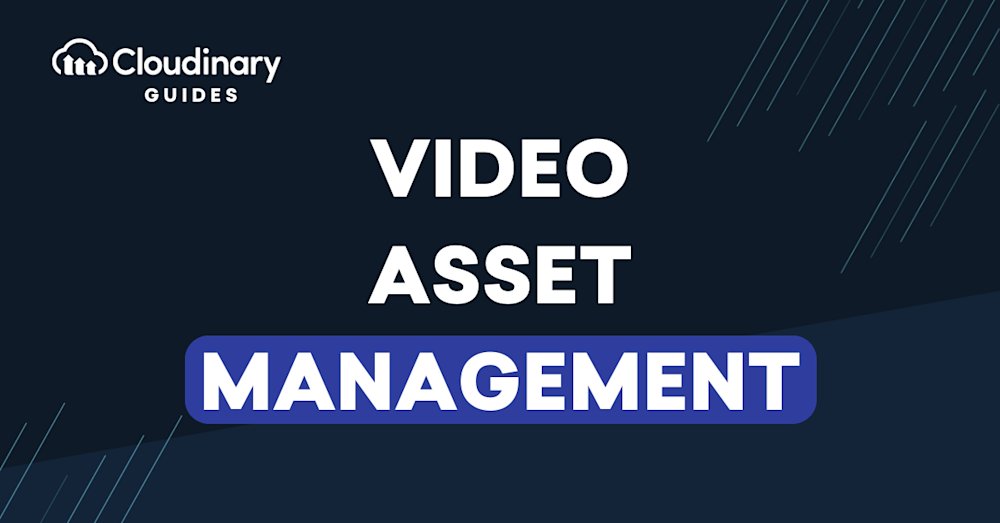Video Asset Management is the foundation of how organizations handle growing volumes of multimedia content. As a specialized branch of digital asset management, it enables companies in industries to organize, store, and distribute video efficiently. By centralizing assets, these systems streamline workflows from ingest and production to publishing, while automating metadata extraction and content analysis.
As businesses increasingly embrace video marketing, the value of video asset management becomes even clearer. Video has become one of the most powerful tools for influencing consumer decisions and building brand connections. It allows companies to present information more dynamically, evoke emotion, and tell stories that resonate with audiences. With more brands producing large volumes of video content each week, efficient media asset management ensures content remains discoverable, consistent, and optimized for use across platforms.
In this article:
- What is Video Asset Management?
- Is Video Asset Management the Same as Digital Asset Management?
- Core Features of Media Asset Management for Videos
- Steps to Build a Successful VAM Strategy
- Getting The Most From Your VAM with Cloudinary
What is Video Asset Management?
Video asset management (VAM) plays a crucial role in helping organizations handle the growing complexity of video content. As companies create and distribute more videos across channels, they face the challenge of organizing, finding, and deploying the right content at the right moment. Traditional storage methods like internal servers or shared drives often make collaboration slow and costly, especially for enterprises managing thousands of videos across multiple locations.
VAM addresses these challenges by centralizing video libraries and leveraging metadata and tags to make assets easily searchable and accessible. It integrates advanced DAM workflows that streamline uploading, editing, distribution, and version control, ensuring that teams always work with the correct and most up-to-date content. Beyond efficiency, a strong VAM strategy helps maintain brand consistency and supports seamless collaboration between creative, marketing, and operations teams.
Is Video Asset Management the Same as Digital Asset Management?
Video Asset Management and Digital Asset Management (DAM) are closely related systems that help organizations organize and access digital assets efficiently, but they differ in their focus and functionality. DAM provides a comprehensive solution for managing a wide range of digital content: photos, documents, audio files, graphics, and videos, offering features such as metadata tagging, advanced search, and version control to ensure assets remain organized and accessible across teams.
VAM, on the other hand, is a specialized subset of DAM designed specifically for video content. It supports the unique technical and creative demands of video production by offering professional-grade playback tools, compatibility with multiple video formats, and seamless integration with editing software. These specialized capabilities make VAM essential for teams working heavily with video, ensuring smoother collaboration, efficient workflows, and faster publishing cycles.
VAM is not intended to replace DAM; instead, it’s a supporting system. When used together, they create a unified digital ecosystem that supports every type of asset while giving video the focused management it requires. This combined approach helps marketing and sales teams quickly locate and deploy the right assets for each stage of the customer journey, enhancing creative output, strengthening brand consistency, and ultimately improving business performance.
Core Features of Media Asset Management for Videos
- Centralized Storage: Store, organize, and manage all video assets in a single, secure location, ensuring easy access and retrieval for authorized users anywhere. With all video files kept in one accessible place, you eliminate the need for scattered files across multiple drives or folders, ensuring quick and efficient retrieval.
- Metadata & AI Management: Use detailed metadata, tagging, and intelligent AI features, such as speech-to-text and object recognition, to make assets easily searchable, categorized, and discoverable. This allows for precise indexing, ensuring content is found based on context, content, or intended usage.
- Workflow Optimization: Streamline the entire video lifecycle, from ingestion, production, and editing to distribution, by automating repetitive tasks and supporting customized workflows. This includes managing different video versions, ensuring that all users work with the latest approved files, and automatically overwriting outdated versions.
- Collaboration & Accessibility: Enable seamless remote editing, sharing, and collaboration with built-in tools and version control. Teams can comment, share, and collaborate directly within the platform, streamlining approval processes and maintaining content consistency.
- Integration: Connect effortlessly with popular video editing software, as well as content management and distribution systems, allowing for smooth transitions across platforms and enhancing overall workflow efficiency.
- Multi-Channel Distribution: Simplify publishing and push video content across various marketing channels, including social media, third-party marketplaces, and CMS platforms. Automate the preparation and optimization of videos for each platform to ensure maximum reach.
- Performance Tracking: Measure and analyze the performance of video content to improve strategy and engagement. Use insights to fine-tune video strategies and increase viewer engagement across channels.
- Productivity & Profitability: Empower marketing and sales teams to quickly locate and use approved content, boosting efficiency, creativity, and overall business performance. With streamlined access to video assets, teams can work faster, avoid content errors, and increase productivity, directly impacting profitability.
Steps to Build a Successful VAM Strategy?
A video asset management platform is a powerful tool, but it’s not a replacement for clear strategy and sound marketing practices. To get the most out of your VAM investment, it’s essential to take proactive steps that ensure the platform supports your business objectives effectively.
1. Involve Key Stakeholders Early
Before selecting or implementing a platform, make sure all key stakeholders: marketing, sales, design, management, technical teams, vendors, and partners are part of the decision-making process. Their early involvement ensures the solution fits real needs and encourages adoption across the organization.
2. Audit Your Existing Assets
Start by taking stock of your current video library. Identify what content you already have, how it’s being used, and where there may be gaps. Include all relevant departments, especially sales, IT, and marketing, in this review. Evaluate your existing naming conventions and metadata practices to uncover opportunities for improvement.
3. Define Clear, Measurable Goals
Determine what you expect your VAM platform to achieve. Whether your focus is reducing search time, lowering production costs, or improving campaign efficiency, your goals should be specific, measurable, and realistic. Engage your teams to understand their challenges and priorities to align your objectives accordingly.
4. Establish Selection Criteria
When evaluating platforms, consider key factors such as scalability, system integration, hosting preferences, implementation timelines, mobile accessibility, and ease of use. Every business has unique requirements, so understanding your priorities will guide you toward the most suitable solution.
5. Choose a Platform That Fits How Your Teams Work
Your employees will be using the platform daily, so it must align with their workflows. Select a solution that’s intuitive and supports their creative and operational processes. If the software feels cumbersome or confusing, adoption will suffer and your investment will lose value.
6. Seek Expert Guidance
If you’re new to implementing VAM solutions, working with experienced software-as-a-service companies like Cloudinary can be invaluable. They can provide insights, help tailor the system to your needs, and ensure smooth deployment.
By following these steps, you’ll set your organization up for success, ensuring your video asset management platform becomes a true driver of efficiency, collaboration, and marketing impact.
How to Choose the Best Video Asset Management Software
Selecting the right Video Asset Management software is essential for effectively managing and organizing your video library. Here, we’ll provide you with important factors to consider when making your decision, ensuring that the software caters to your specific needs. Keep in mind that the best choice for you will depend on factors such as your budget, the size of your video library, and your desired level of customization. When evaluating VAM software, consider the following points:
- Ease of use: An intuitive interface and straightforward navigation are crucial for efficient daily use.
- Scalability: Choose a solution that can grow with your needs, allowing for seamless expansion of your video library.
- Metadata management: Robust metadata support helps you locate and organize your assets more effectively.
- Integration: Ensure the software integrates well with your existing tools and workflows.
- Security & Permissions: Strong access control and data protection features increase the security of your video content.
- Customer support: Opt for a provider that offers reliable customer service and ongoing technical support.
Remember to assess your organization’s unique requirements, weigh your options, and select software to make video asset management a breeze for you and your team.
Getting The Most From Your VAM with Cloudinary
Video is a powerful medium for delivering content but it can also be tricky to manage. Cloudinary is a cloud-based video management solution that allows you to easily upload, store and deliver videos from anywhere on your website or mobile app. It provides an API for managing your media library and an image editor for creating new videos from existing ones.
Cloudinary is committed to delivering an exceptional Video Asset Management platform designed to empower content creators and provide a smooth workflow for your team. It offers a comprehensive range of features catering to beginners and experts, making it a reliable and robust VAM solution. Here are some of the standout attributes that showcase Cloudinary’s prowess in the world of VAM:
- Automatic transcoding. Cloudinary seamlessly converts videos into multiple formats and resolutions, ensuring optimal playback on various devices.
- AI-powered tagging. Harness the power of artificial intelligence to generate descriptive tags and boost asset searchability.
- Real-time collaboration. Work simultaneously with team members, track changes, and keep everyone in sync, regardless of location or time zone.
- Efficient CDN integration. Deliver your content to viewers quickly and efficiently with Cloudinary’s pre-configured content delivery network.
- Customizable video player. Personalize your video player to match your brand and ensure a consistent user experience.
With Cloudinary, you’ll unlock true growth potential and gain an edge in the competitive digital landscape while enjoying a tailored and efficient asset management experience.
The Last Word: Elevate Your VAM Practices with Cloudinary
As an essential tool for creative professionals, these systems streamline workflows, enhance collaboration, and improve asset organization. With a wide range of features catered to suit various levels of expertise, a VAM system will quickly become a fundamental part of your arsenal, allowing you to focus on creating stunning content while the management aspects are efficiently taken care of.
Cloudinary provides a robust and intuitive VAM system that delivers a seamless, secure, and highly collaborative environment, empowering your team to focus on what matters most: producing exceptional video content. It has been designed with the needs of developers and technical professionals in mind, delivering an easy-to-use, fully scalable platform that integrates perfectly with your existing tools.
Try Cloudinary today and experience firsthand the transformative impact it can have on your video management and creative workflow.


